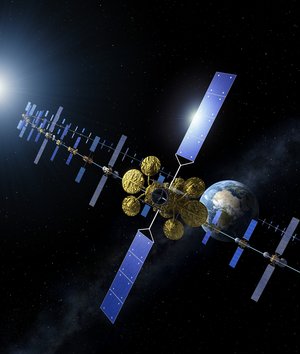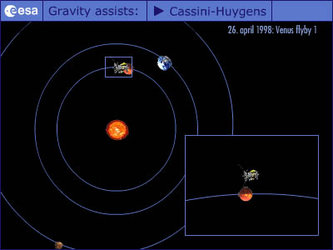What is a 'launch window'?
The launch window is a term used to describe a time period in which a particular mission must be launched.
If the spacecraft intends to rendezvous with another spacecraft, a planet, or other point in space, the launch must be carefully timed so that the orbits overlap at some point in the future. If the weather is bad or a malfunction occurs during a launch window, the mission must be postponed until the next launch window appropriate for the flight.
On 2 June 2003, ESA launched its Mars Express mission on board a Russian Soyuz-Fregat launcher - almost halfway through the assigned launch window. The Mars Express launch window had opened on 23 May and would last for four weeks.
But why did we need a launch window for Mars Express? If we are going to send a mission to a planet, why not just launch the rocket at any time, find where Mars is in the sky, point the rocket at it and travel there?
Imagine the Solar System as an athletics race track. If you were watching the 400 metres race from the centre of the track and wanted to intercept one of the runners taking part, one way would be to simply chase the runner you wish to stop. If you were fast enough, you might eventually catch up but only after expending a lot of energy and travelling a long way.
A much better way to intercept your athlete is simply to walk across the centre to the other side of the circular track. It is a much shorter distance and you use a lot less energy and time getting there.
You calculate your walk so that you arrive at the other side of the track at the same time as they do. Too early and you are waiting around for them. Too late and you have missed them completely - you'd have to wait one lap until they came around again.
In spaceflight, straight-line paths do not exist for the same reason. All planets move in long, curved paths around the Sun that take the shape of circular and elliptical orbits. In order to reach Mars, Mars Express must leave Earth and then travel in an elliptical orbit around the Sun that will eventually intersect the orbit of Mars.
Calculating the launch window for the ESA Mars Express mission involved timing the launch to allow the spacecraft and Mars to arrive at the same point in space at the same time.















 Germany
Germany
 Austria
Austria
 Belgium
Belgium
 Denmark
Denmark
 Spain
Spain
 Estonia
Estonia
 Finland
Finland
 France
France
 Greece
Greece
 Hungary
Hungary
 Ireland
Ireland
 Italy
Italy
 Luxembourg
Luxembourg
 Norway
Norway
 The Netherlands
The Netherlands
 Poland
Poland
 Portugal
Portugal
 Czechia
Czechia
 Romania
Romania
 United Kingdom
United Kingdom
 Slovenia
Slovenia
 Sweden
Sweden
 Switzerland
Switzerland






























